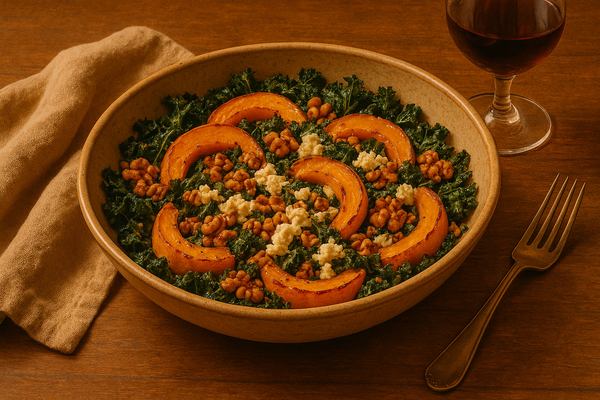
The Season for Real Salads
Fall dinner salads don’t whisper; they crunch. They smell of roasted edges and warm dressing, not cucumber water or restraint. This is the season when salads settle into themselves: layered, golden, and deeply satisfying.
When the air turns cool and summer’s brightness fades, something shifts in appetite. Greens want warmth; flavors slow down. The bowl fills with roasted squash, sharp leaves, toasted nuts, and vinaigrette that bites a little before softening. Salads like these taste like the season changing, quiet and steady, enough to make a meal.
The Base: Bitter, Brave Greens
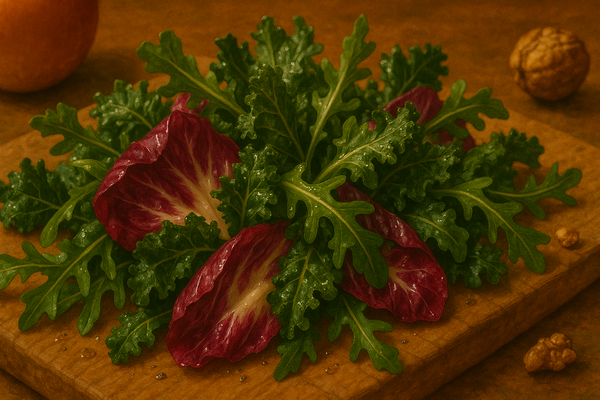
Why Bitter Greens Make the Best Fall Salads
Summer salads lean sweet; autumn ones lean honest. Kale, radicchio, and arugula stand up to heat, dressing, and time. They keep their shape, their spirit, their bite.
Massaging kale until it softens slightly releases a nutty scent that feels alive. It isn’t about perfect texture but about waking the greens up just enough to meet the rest of the plate halfway.
Bitter greens are grounding; they bring balance, not charm. They remind the palate that depth matters more than ease.
The Heart: Roast Something Golden
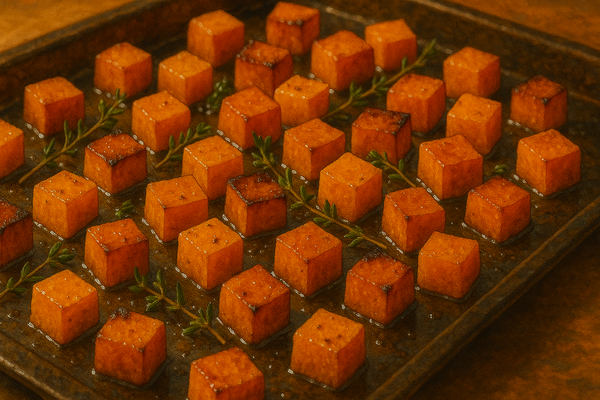
The Secret to Dinner Salads That Actually Fill You Up
Every fall salad that feels like dinner includes something roasted. Squash, sweet potatoes, parsnips, or cauliflower: all turn simple greens into a meal that feels settled and complete.
The trick is patience. Roast until the edges darken and caramelize; the crisp corners add texture, the soft centers bring warmth. A drizzle of olive oil, a pinch of salt, a few thyme leaves—nothing more. Let them cool before they meet the greens so the leaves stay bright.
Roasted vegetables don’t shout for attention; they just make everything else taste truer.
The Crunch: Nuts, Seeds, and Other Little Moments
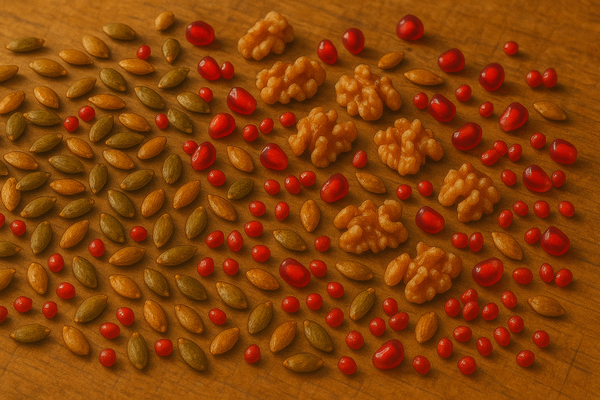
How to Add Texture and Depth to Your Fall Salads
Without texture, a salad feels like work. A handful of toasted walnuts or pumpkin seeds changes that. Toasting wakes up the oils, deepens the flavor, sharpens the sound of each bite.
Sometimes a small coating of maple, chili, and salt before roasting adds quiet complexity. The sweetness hums beneath the bitter and the savory, never overtaking them.
Crunch is what keeps a salad from feeling predictable; it’s the reminder that food should be felt as much as tasted.
The Cream: Cheese and Dressings That Feel Like a Hug
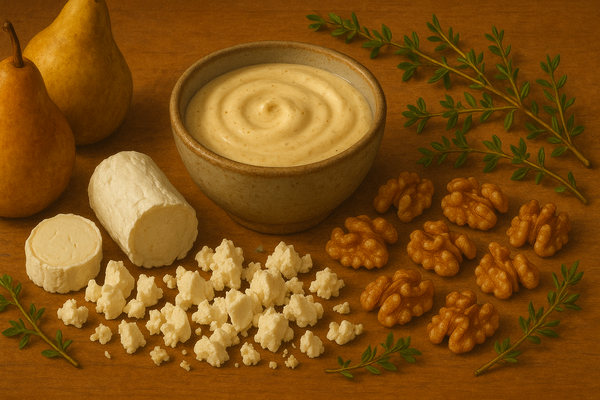
Dressing for the Season
Creaminess softens the sharper edges of fall. A crumble of goat cheese or feta adds calm to the bitterness of the greens and the heat of the roast.
The dressing should taste alive. Whisk together Dijon, shallot, apple cider vinegar, and olive oil until it holds together loosely. A touch of honey helps the flavors settle into each other without tipping into sweetness.
A good dressing doesn’t need to stand out; it simply brings everything into focus.
The Surprise: Fruit Belongs Here
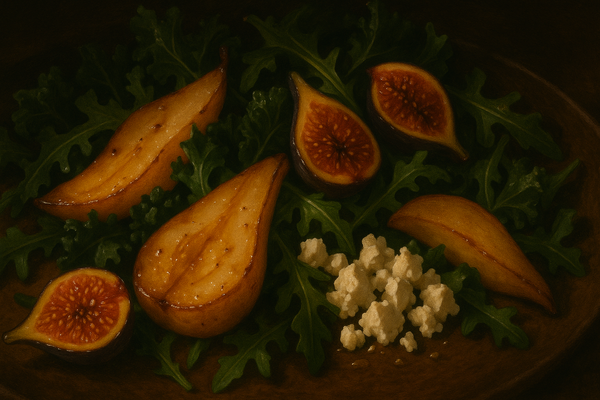
Sweet Notes That Don’t Overstay Their Welcome
Fruit in a fall salad feels unexpected until it doesn’t. Roasted pears, figs, or thin slices of apple add quiet balance to the earthier notes. They don’t shout; they just remind the palate what contrast feels like.
A few pieces are enough. The goal isn’t sweetness; it’s dimension. The right bite can shift the whole rhythm of a meal.
Putting It All Together: Building the Perfect Fall Dinner Salad
Building a fall salad is an act of layering: texture against tenderness, warmth against bite.
- Begin with sturdy greens such as kale, arugula, or radicchio.
- Add something roasted: squash, potatoes, or carrots.
- Fold in crunch: nuts, seeds, or crispy chickpeas.
- Bring in calm: cheese or a creamy dressing.
- Finish with something bright: fruit, herbs, or vinegar with an edge.
Taste as it comes together; adjust gently. A good salad will tell you when it’s right.
The moment it feels balanced, stop; the beauty is in restraint.
Why Fall Salads Feel Like Comfort Food
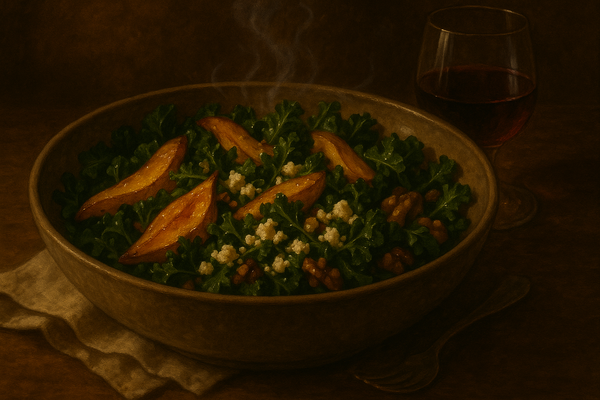
Fall salads carry the weight of the season: warm, steady, and full of quiet energy. They prove that comfort doesn’t have to come from heaviness; it can come from attention, from contrast, from care.
A meal like this asks nothing more than to be eaten slowly. The oven did most of the work; the rest is simply noticing what’s already good.
